Your cart is currently empty!
Author: Michael Martin
-
Antimicrobial Options
Cleaning Basics…Part 13
The Reasonable Options for Antimicrobial Defenses
Listen to the Audio Version:
0:000:00
For thousands of years certain materials have been known to have tremendous antimicrobial properties, and yet we continue to accept a variety of inferior materials for environmental surfaces in public places. This must come to an end. If as we are told, that ‘custodial services are the first line of defense against cross-contamination and infection’ then this is the industry that must lead the charge in the insistence that commonly touched surfaces receive innate, non-toxic, antimicrobial properties either during manufacturing or on a measured cyclical basis throughout their life-cycle. Continue reading to refamiliarize yourself with many that you already know, and to hear about some others that may not be as regularly discussed or well known.
Metal Ions
The first and most commonly recognizable of the antimicrobials are those metals and metallic compounds that collect energy from the atmosphere and release microbial-destructive ions. While others may fit this class the historically verifiable metals are:
Copper
Copper is an excellent and affordable means of making many common touch points antimicrobial in nature: hand rails, push bars, light switches, handles and even countertops. The first recorded use of copper as an antimicrobial material can be traced back to ancient Egypt. The Egyptians used copper to sterilize wounds and drinking water. Greek physicians also recognized the healing properties of copper, and used it to treat various medical conditions such as skin infections and ulcers. In the 19th century, a French chemist named Louis Pasteur demonstrated that copper ions were toxic to bacteria. Later, in the 20th century, researchers discovered that copper surfaces could kill bacteria within hours of contact. Today, copper is used in various medical and non-medical settings as a natural antimicrobial agent. Its ability to kill bacteria and other harmful microorganisms has made it a popular and effective material for use in hospitals, food preparation areas, and public places such as schools and transportation systems. The discovery of copper’s antimicrobial properties has revolutionized our understanding of how to prevent the spread of infectious diseases. It is actually a very sad fact that new construction is more often equipped with plastic water lines than with copper lines – this may be good cause to add regular water testing to environmental services protocols in facilities with plastic water lines.
Silver
Silver is another material that has had a long history of being recognized as having antimicrobial properties – with even faster effect than copper, silver ions can kill bacteria and viruses on contact and can be ground to so fine a material that it can be added to almost any material or added to nearly any coating. Historically, silver has been
used as a powerful antimicrobial agent for centuries. In ancient times, people used silver plates and utensils to protect themselves against bacteria and other harmful microorganisms. Since the nineteenth century, silver was used to treat burns and wounds, because of its ability to inhibit the growth of bacteria. The use of silver as a potent infection-fighting agent continued throughout the twentieth century, with applications in fields such as medicine,
water purification, and food preservation. Today, silver is still widely used in healthcare and home sanitation products due to its demonstrated ability to kill harmful microorganisms.
Zinc & Titanium Dioxide
Zinc, another naturally occurring and readily available element has been shown to have antimicrobial properties. Titanium dioxide, a derivative compound of another element has been demonstrated to have powerful and long-lasting UV-activated antimicrobial properties and both can be incorporated into both paints and clear coatings, adhesives, plastics and laminates.
Non-Metallic & Naturally Bio-Static
While all of the above have application in the protection of high-touch hard surfaces, that is generally where their story ends. Nano and metallic ion particles are not as readily applicable on the soft surfaces that can harbor so many germs among the most vulnerable in our population – the elderly and young children. In assisted living and nursing facilities, the elderly sit on soft couches, chair and at tables with soft backs and cushions. Preschoolers and kindergarteners play with soft toys, sit on carpeted floors and in bean bag chairs for story times and during many of their lessons. In hospitals, room divider curtains, staff ‘scrubs’ and linens all require more attention
than they are getting to reduce the likelihood of cross-contamination through contact. Here are two option, one of which is fresh, natural and worthy of keen attention.
Membrane Rupturing Coatings
The first category we will briefly mention, that has been around for nearly 40 years is the class of product employing QAC with a ‘pins and needles’ approach to destroying microbes. This method of physically disrupting the cell walls by sharp and direct contact to pierce and destroy the organism with a 3-dimensional surface. This material and method have proven effective, but it is subject to destruction by friction, reduces cleaning efficiency and employs the same ingredient found in common quaternary ammonium compound disinfectants, and film-building.
Metabolism Disrupting Coatings
The final category, and my personal favorite, is a class of coating produced naturally from the shell materials of crustaceans, insects and some fungi. This active ingredient is called Chitosan and it has an entirely novel method of action. Instead of rupturing the membrane of the microbe with a 3-dimensional surface, this material emits a constant, strong, positive ionic charge that attracts the electrons responsible for cell metabolism to the surface of the cell and holds them by magnetic force, ceasing metabolism and destroying the microorganism. Chitosan based products produce a crystal clear, hydrophobic coating that enhances clean-ability and reduces porosity. Its positive applications are well worth penetrating exploration.
In summary, the answer is that we have at our disposal more than ample means of offering protection ‘around the clock’, and it’s time to deploy a total protection strategy.
-
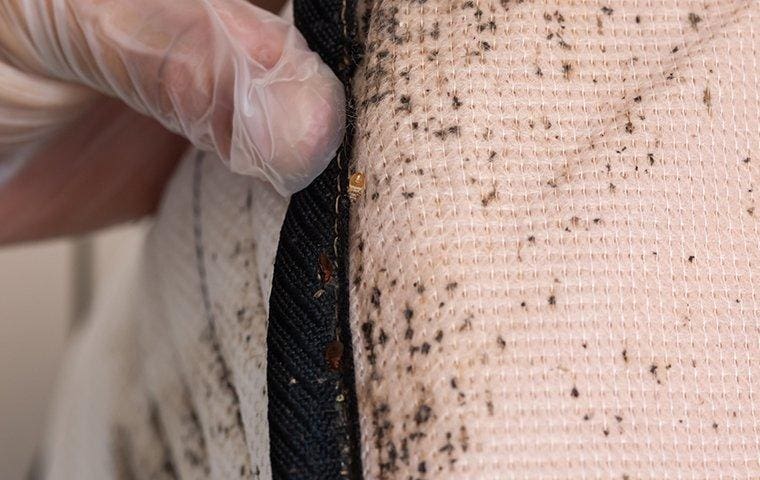
Using Gaseous ClO2 to Remediate Bedbugs
The Study
In this Study by Shawn G. Gibbs, PhD; John J. Lowe, MS; Philip W. Smith, MD; Angela L. Hewlett, MD, Chlorine Dioxide was used at three different concentrations to test the effectiveness of ClO2 on bedbugs. According to WebMD, Bedbugs are small, oval, brownish insects that live on the blood of animals or humans. Adult bedbugs have flat bodies about the size of an apple seed. After feeding, however, their bodies swell and are a reddish color; they do not fly, but they can move quickly over floors, walls, and ceilings. Female bedbugs may lay hundreds of eggs, each of which is about the size of a speck of dust, over a lifetime.
Immature bedbugs, called nymphs, shed their skins five times before reaching maturity and require a meal of blood before each shedding. Under favorable conditions the bugs can develop fully in as little as a month and produce three or more generations per year.
Although they are a nuisance, they are not thought to transmit diseases.
This Study, though conducted in a laboratory, sought to evaluated the efficacy of gaseous chlorine dioxide ClO2 for extermination of bedbugs (Cimex lectularius and Cimex hemipterus) in such a manner so that the effectiveness could be trusted anywhere: lodging facilities, hospital rooms, and all types of dormitories.
The concentrations of ClO2 used were:
- 362 ppm
- 724 ppm
- 1086 ppm
The Results
What was discovered is remarkable. Concentrations of 1,086 and 724 ppm of ClO2 yielded 100% bedbug mortality assessed immediately after exposure. That’s right, immediately.
At just 362 ppm, an exposure of 6 hours returned complete annihilation of the bugs, young and eggs.
The Practical Application
Please note, that this was a study of gaseous, not aqueous ClO2. And in order to duplicate this level of efficacy, you will require:
- A [closed] Gas Generation Chamber (recommended is lidded 1-gal pail with aerator in, and gas out ports).
- A 110v Bubbler Pump
- Tubing to run from the gas generation chamber to the the mattress gassing chamber (a zippable mattress storage bag)
- Duct tape to seal the zipper shut and seal the gas-out tubing.
- (2) 100g Envirotab Tablet
- 1.5 Quarts of water.
(2) 100g tablet, in 1.5 quart of water, will generate a gaseous solution of approximately 1600 ppm. This concentration, in an enclosed chamber containing the mattress, for 2-4 hours, should be more than sufficient to dispatch any bedbugs. Once gassed, let the mattress air out and vacuum well.
-
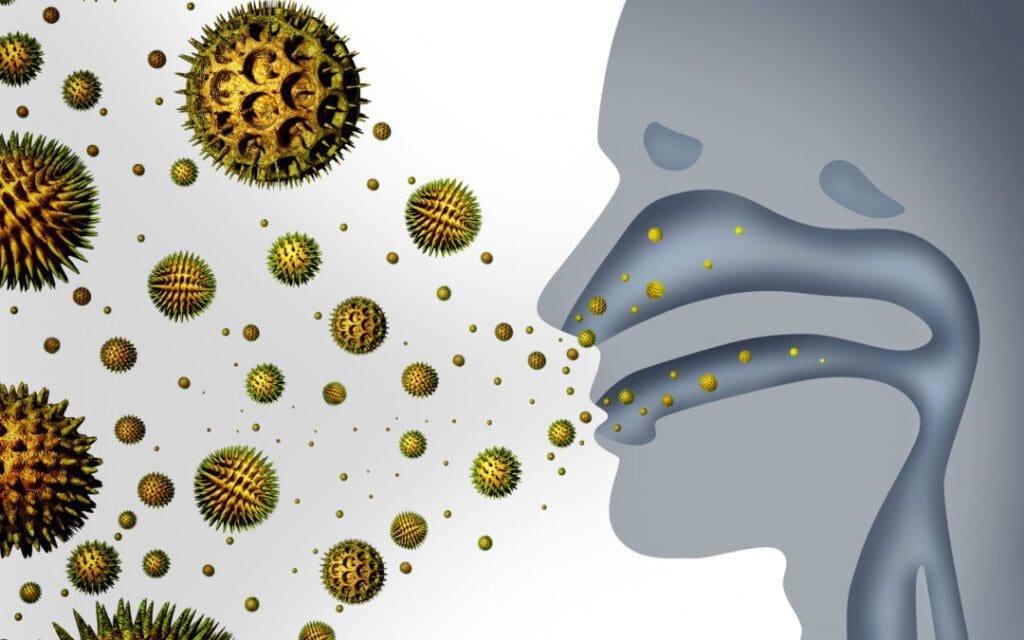
ClO2 & Airborne Allergens
Putting Our Tablets to the Test Against Common Airborne Allergens
Recently, one of our forward-thinking distributors commissioned a nationally recognized lab to put a well known theory to the test – Is ClO2 efficacious in denaturing airborne allergens, and if so; is it restricted to either the aqueous liquid state [for cleaning] or the gaseous state [for air-remediation]?
How the product was prepared…
A single 1 gram tablet was dissolved into 32 ounces of water, yielding a working solution of about 115ppm. This is our most common product and application, creating a cleaner, deodorizer and proven sanitizing solution (still in with the EPA for review and registration).
This product is available in a wide variety of packaging options:
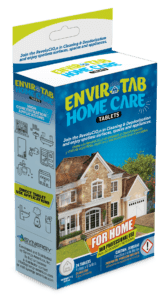
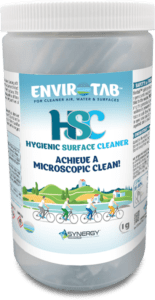

How the allergens were prepared…
All FIVE allergens, at levels which would be considered ‘High Risk” were added to a phosphate buffered saline [PBS] solution. In other words, there was sufficient allergens from each of the five categories to trigger a severe allergic reaction. These allergens included:
- Dust Mites
- Cat Dander
- Dog Dander
- Cockroach Droppings
- Ragweed Pollen
After establishing that the ClO2 solution did not interfere with the test method, five vials were prepared, each containing 0.5ml of each of the allergens and 0.5ml of the aqueous ClO2 solution. The results were astounding:
- Dust Mites – 99-100% Eliminated
- Cat Dander – 99-100% Eliminated
- Dog Dander – 99-100% Eliminated
- Cockroach Droppings – 99-100% Eliminated
- Ragweed Pollen – 99-100% Eliminated
The control and the treated solutions were then dehydrated and prompted to once again become airborne for analysis, at which time the aqueous results were confirmed in gaseous form.
Summary…
This test confirms both our suspicions and our scholarly study findings that there is nothing better for the control allergens than a regiment which includes aqueous chlorine dioxide for cleaning, and a low-dose (0.001 ppm) release of gaseous ClO2 into indoor air spaces.
-
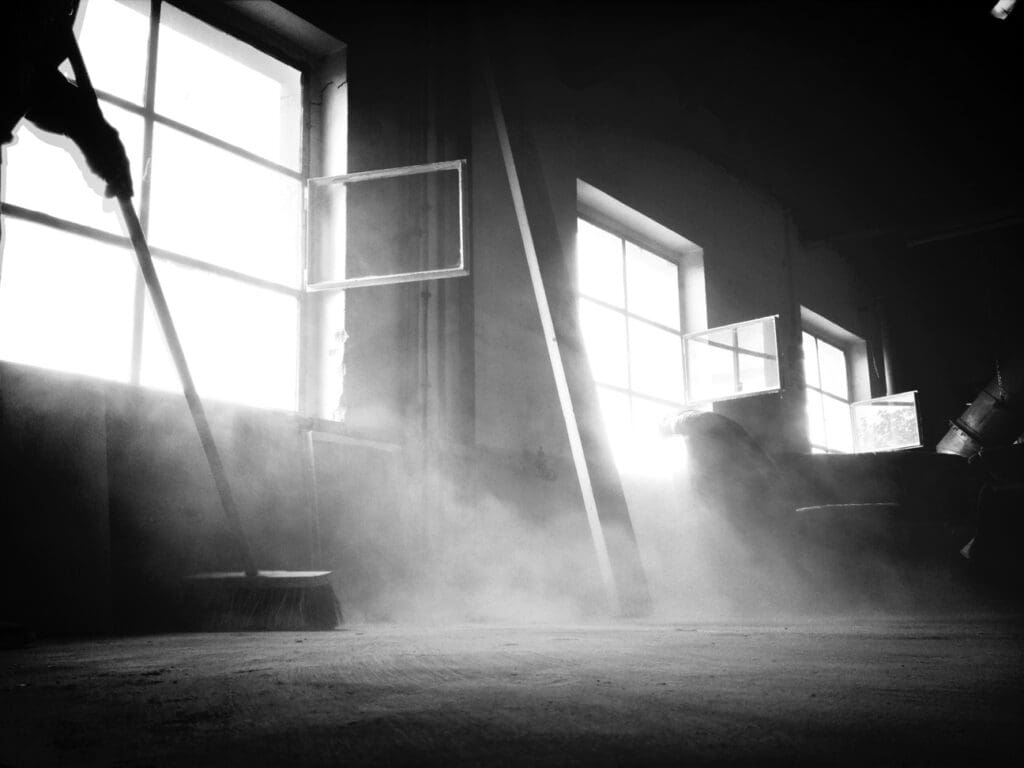
Size Matters
Why you clean How you clean…Part 1
Why Soil Size Matters…Some Definitions
Listen to the Audio Version:
0:000:00
Before we get anywhere near a discussion on equipment choices, we need to establish some definitions. The fact of the matter is that not all soils are created equal. They vary in size, they vary in type and they vary in their potential to do harm to your building occupants. Your janitorial or custodial team would do well to understand not just ‘HOW’ to clean, but ‘WHY’ they clean how they clean. First, let’s address the sizes of soils and why they matter.
Gross Soils
We will begin by categorizing any soil that you can SEE and is not easily made AIRBORNE as Gross Soils. In a school setting, these would be the pencils, papers, paperclips, chewing gum, lost sneakers and backpacks. In an office setting, these are the coffee spills, dropped business cards and misplaced laptops (sorry, is it too soon to make fun of Hunter Biden?) Gross soils require bending down and picking up or occasionally being able to sweep them into a [misnamed] dustpan.
Fine Soils
Fine Soils will be categorized as any soil that is barely visible, but you know it’s there – especially if you sweep it into a dust cloud. Hence, Fine soils can be made airborne, and when attempting to clean them by this means, you are setting yourself back. The cloud is formed, and the dust settles back on the horizontal surfaces. A broom and dustpan should never, ever be used for cleaning should you believe the surface is prone to contamination with this size of soil. Vacuuming is the ONLY acceptable system for fine soils.
Microbial Soils

Microbial Soils must be assumed as present wherever people are, especially on the surfaces that are touched and the surfaces where fine soil is also known to accumulate. Microbial Soils may also be referred to as Bio-Burden. These soils will never be seen with the naked eye, and are not generally removable even with vacuuming. Bacteria is the most common of these soils and as you may already know, bacteria builds and resides in colonies. The bio-film generated by the residing bacteria is a sticky, slimy protective layer made primarily of proteins. This substance is rarely tested in labs when disinfectants are seeking their qualifications for EPA registration, and about 80% of the disinfectants and sanitizers sold are not able to break through to actually get to the microbe.
In Summary
This is just the first in a series of posts on the subject of cleaning, and there is more to come, but suffice it to say now that if you are in cleaning management or supervision, assessment of the surfaces to be cleaned should be top priority. Your selection and assignment of chemicals, tools and equipment will be paramount to the success [and health!] of your cleaning staff. You can even begin to move on to sanitizing and disinfection until you get down the basics of cleaning.
-
Synergy Carpet Cleaning Videos

Carpet Cleaning Videos, using all of the components of our system.
The below video is a shorter overview of the use of the components for commercial carpet cleaning with products from Synergy.
0:000:00
This video is a longer, more detailed training version.
0:000:00
-
User Registration
Register with Synergy Americas
[fluentform id=”4″] -
It ALL Comes Down to the Cleaning
It’s all in the cleaning…
Both the EPA and CDC specify that the elimination of germs from surfaces – even those that are to be disinfected – begins with a pre-cleaned surface.
Make no mistake…
It is ALL in the cleaning.
-
How Many 100g Tablets Do I Need?

How Many 100g Tablets to Deodorize a LARGE, OPEN Space?
NOTE: The below calculator ASSUMES that you will be employing some means of aspirating the ClO2 solution – pumping air into the pail, using a ClO2 Distribution Machine, etc. The “ROOM” dimensions may be used for WHOLE HOUSE dimensions, so long as fans or HVAC is used to circulate the air.
Please note: While tablet volumes may be shown in decimal point quantities, the tablets are NOT to be cut. Simply round the quantity up or down as required.
